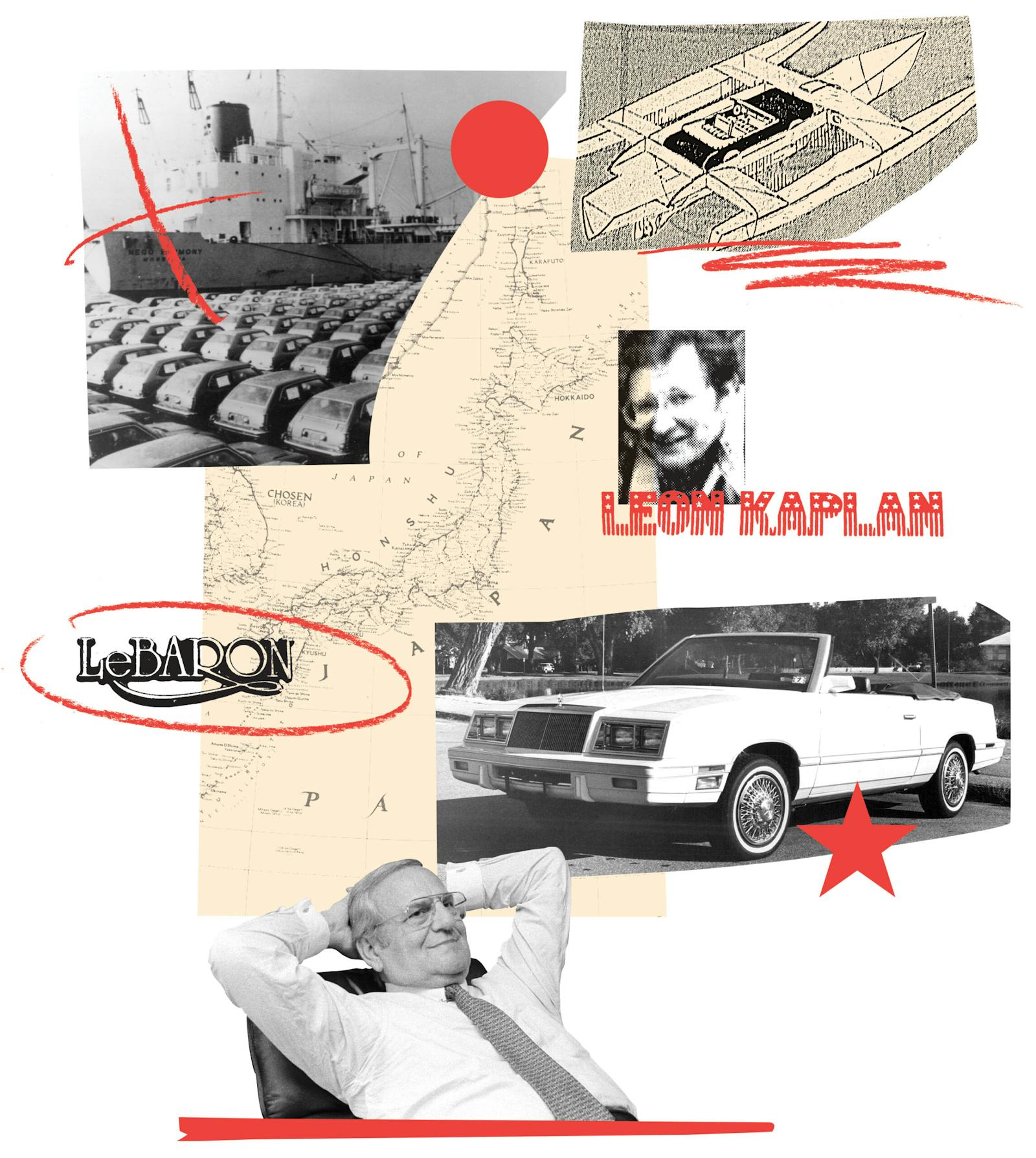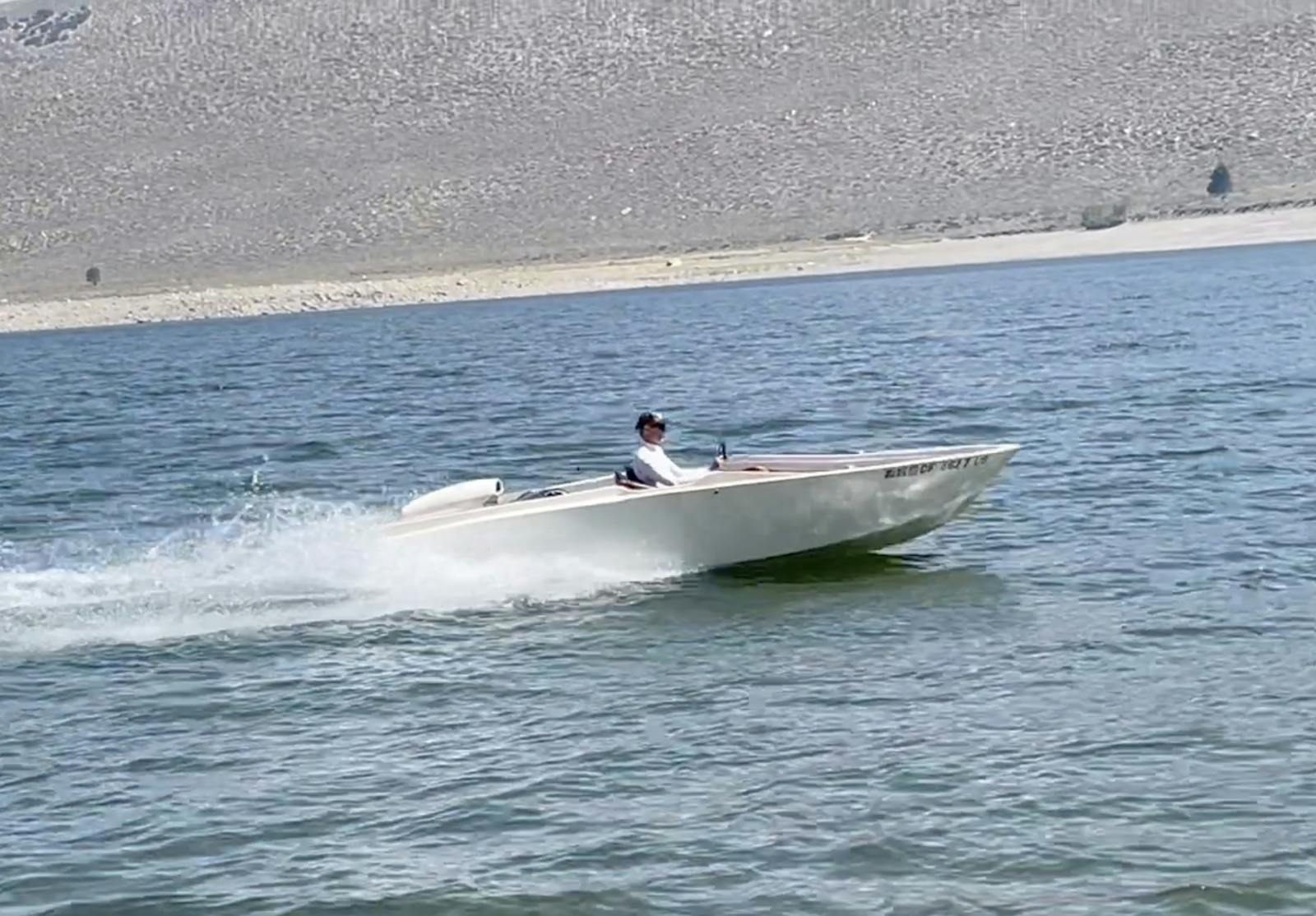Media | Articles
CHARLES MISTELE: Savior, protector of Miss America IX
The Hagerty Marine Hall of Fame was created in 2009 to honor the people and organizations that have made profound, positive contributions to the classic and collector boat lifestyle. The Class of 2014 includes Charles Mistele, Matt Smith and the Lyman Boat Owners Association. This is Charles’ story …
Charles Mistele would never compare himself to a more-famous Charles – Charles Lindbergh – but he is confident that his 1930 Gar Wood speedboat, Miss America IX, is as historically significant as Lindbergh’s famous plane, and he isn’t alone.
“As one of the curators of the Smithsonian once said, this boat is to water what the Spirit of St. Louis is to aviation,” Mistele said, “and fate picked me to protect it.”
Miss America IX, built by legendary Garfield “Gar” Wood to defend the prestigious Harmsworth Trophy, became the first boat to exceed 100 mph when it reached 102.256 mph on March 20, 1931 in Miami. But when Mistele and his father first saw it in Algonac, Mich., in the late 1960s, it was a shell of its former self – literally.
“There were only three things left on that boat: the steering wheel, bow rudder and propeller struts,” said Mistele, who now lives in Bluffton, S.C. “Gar Wood had donated it to the Algonac Lions Club, and their president, Frank Cona, said they would never sell it. But I gave him my card and asked him to call me if he ever decided to part with it.”
Marketplace
Buy and sell classics with confidence
Then Mistele waited and hoped, and waited some more …
Charles Mistele grew up in the Detroit area and practically lived on the water. His father, Harold, loved antique cars and boats, and his mother, Elisabeth “Libby” Mistele, was one of the first women in the world to race 22-square-meter sailboats. She joined the Detroit Yacht Club in 1936 and remained an active member for 78 years before passing away earlier this year at the age of 100. “She was a legend, a remarkable lady – very humble,” Charles said. “Whenever she won a race she’d send a member of her crew or one of us kids up to accept the trophy.”
Libby Mistele won six consecutive 22-square-meter Great Lakes Sailing Championships during the late 1940s and early ’50s, and she passed her love for the sport on to her children and grandchildren.
Charles was a willing participant, and he became an accomplished sailor in his own right, competing in the 1964 Olympic trials. He joked that he attended Western Michigan University only to fill time between sailing seasons. But it was at WMU that he met his future wife, Diane. The two were married in 1966.
After graduation, Charles – the second of Harold and Elisabeth’s three sons – joined the family business, Mistele Company, and the two often traveled together. It was on one of those trips that they spotted Miss America IX sitting on a flatbed trailer. Littered with sticks and wearing a sign that promoted a local fishing tournament, it hardly looked like a champion. But the Misteles knew better.
“In 1930, racing boats were made to last only two years, and then they’d be stripped for the parts,” Mistele said. “Of the 10 Miss America boats, only three are left – VIII, IX and X. Rough shape or not, we knew No. 9 was a treasure, and someone had to save it.”
Cona called Mistele two years later, and the ringing of the phone must have sounded like the “Hallelujah Chorus.” He explained that the Lions Club had lost its lease, needed to get rid of the boat and he had just located Mistele’s business card. The problem was another prospective buyer was already on his way from New York. If Mistele wanted Miss America IX, he would have to drive 75 miles to Algonac immediately, through heavy fog. He didn’t hesitate, but his wife did.
“She said, ‘We don’t even have bedroom furniture, and you want to buy a boat?’ But I told her I had to go. I had to,” Mistele said. “She wouldn’t let me go alone, so we put our daughters in the car and off we went. It was a treacherous drive, let me tell you.”
The Misteles arrived safely and needed considerably less time to examine the boat than it took them to get there. Diane, wondering what all the fuss was about, returned to the car with the girls while Mistele and Cona chatted. “I got back into the car and we started driving home,” Mistele recalled. “Neither of us said a word for miles. Then Diane said, ‘I’m so glad you didn’t buy that boat.’ And I said, ‘I did buy it.’ She said, ‘What?! What are you thinking? You’re a sailor, not a power boater.’ But I told her somebody had to protect it. When I was in high school I remember the marinas in St. Clair Shores burning old wooden boats. It just broke my heart. I had to save this one.”
Harold Mistele was more enthusiastic. In fact, since Miss America IX’s original Packard V-12 engines were long gone, he had an idea to replace them – along with a promise.
“Whenever my father called me Charlie, I knew he was doing some heavy thinking,” Mistele said. “He said, ‘Charlie, you know a lot of GM people. See if someone will donate a couple of NASCAR racing engines. If you get the engines, I’ll put them in.’”
Mistele made some calls, but since General Motors wasn’t officially involved in racing at the time, “they said they didn’t have any racing engines to give me.” Then one day, an unmarked van pulled into Mistele’s driveway, and a scene from a spy movie unfolded before Mistele’s very eyes. “The guy said, ‘I have something for you,’ and he pulled inside the building. He asked me to close the doors, then he unloaded two 427 (cubic inch) engines with Holley carburetors. When he turned to leave he said, ‘I was never here, you don’t know me, you never saw me, have fun.’ And he drove away, just like that.”
Countless hours of meticulous repair and refurbishing followed. “It was a preservation, not a restoration,” Charles said. “We had to replace the (triple-planked) bottom, but it still has the original mahogany and gold leaf lettering on the side, and I left all the dings and the dents. Think about it – Gar Wood put those there. Gar Wood!”
From the moment that Mistele purchased Miss America IX, he knew the boat belonged in the water, not a museum. In fact, of the five Harmsworth Trophy boats that still exist, only Miss America IX still gets wet. When it was time to unveil the famous speedboat – 30 feet of red mahogany trimmed in white and chrome, with a pair of engines that can still push it past 100 mph – it was Diane who received one of the first rides. And she has never set foot on the boat again.
“My fists were clenched so tightly that I put my fingernails through my hands,” Diane said. “We have three daughters (Michelle, Hollis and Brittany), and I kept thinking about them. I understand Chuck’s passion, and I’m supportive of it. I’m glad he bought the boat. But I’m not a participant. I can’t do it.”
Mistele’s father died in 2007, and less than a year later Diane required surgery, and Charles was suddenly struck by how fragile life is. So after Diane had recovered, they decided to share Miss America IX with as many people as possible. They especially enjoy showing it to kids.
“We’ve been all over – Florida; Canada; Houston; Branson, Mo.; Lake Geneva, Wis.,” Charles said. “I love Hagerty’s youth judging program because my greatest concern has always been getting kids involved. With their parents’ permission, I let kids start the boat, and you can imagine what 1,100 horsepower sounds like. The look on their faces is priceless.”
Out on the water, Mistele doesn’t push Miss America IX much past 70 mph anymore. “She’s 84 years old now. She’s a world champion. She has nothing left to prove. I’m not going to abuse her.”
Always the protector, he is already considering who might care for Miss America IX after he is gone. “One thing I’ve learned is you don’t ever really own one of these boats,” Mistele said. “You’re just a custodian for a period of time.”
For more information about Miss America IX, visit www.missamericaix.com.


